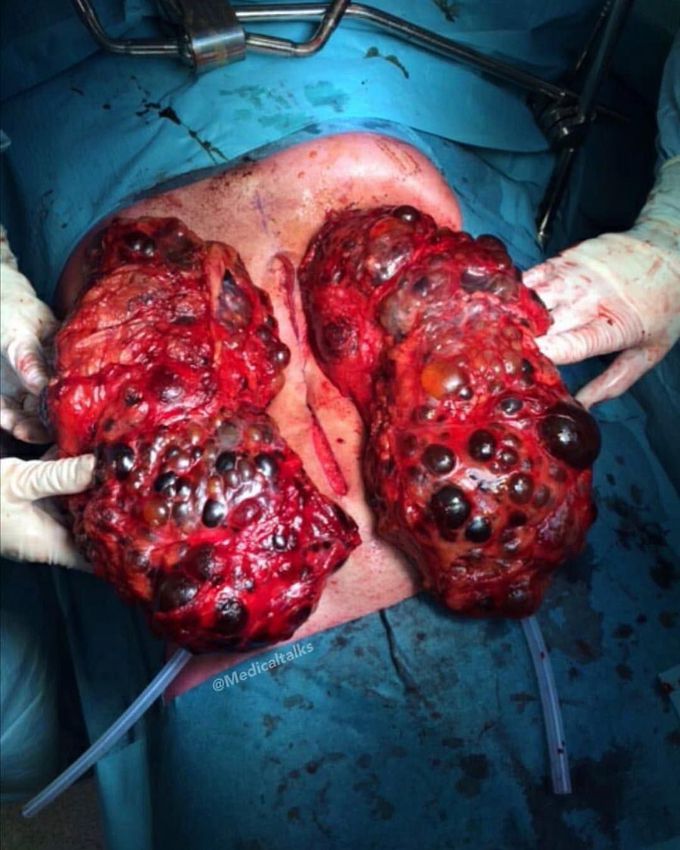


Polycystic kidneys - 30 pounds!!
Two kidneys, 15 pounds each. Notice how big they are compared to the surgeon’s hand! This patient suffered from a chronic kidney failure (end-stage renal disease) due to polycystic kidney disease. He had both kidneys removed and underwent a kidney transplantation from his wife, who was miraculously found to be a suitable donor. Notice how both kidneys demonstrate a large number of cysts of variable size (from a few mm to many cm), which are filled with fluid of variable color - from clear or straw colored to altered blood or chocolate colored to purulent when infected. In Polycystic kidney disease, the clusters of fluid-filled sacs, or cysts, interfere the kidneys ability to filter waste products from the blood. The growth of cysts causes the kidneys to become enlarged and can lead to kidney failure. The majority of cases are inherited in an autosomal dominant fashion. The kidneys are normal at birth, and with time develop multiple cysts. At the age of 30 years, approximately 2/3 of patients will have visible cysts by ultrasound. That figure increases over time, such that essentially all patients eventually demonstrate cystic change. By the age of 60 years approximately 50% of patients have end stage renal failure. The risk of renal cancer is not increased. Frequent complications are dangerously high blood pressure (hypertension), pain in the back or sides, blood in the urine (hematuria), recurrent urinary tract infections, kidney stones, and heart valve abnormalities. A non-invasive, reliable and inexpensive diagnosis is made by ultrasound. There's currently no cure for PKD, but current treatment to manage problems caused by the condition are dialysis and transplant.
Thanks alot for presenting this case and the related explanations
Thank you for sharing, impressive photo. Thank goodness he had a suitable donor when the need came to remove his kidneys.
These kidneys are quite huge! I wonder how he even survived with them
Hemodynamic stimuli&nonhemodynamic stimuliEffects of sugar on teeth

